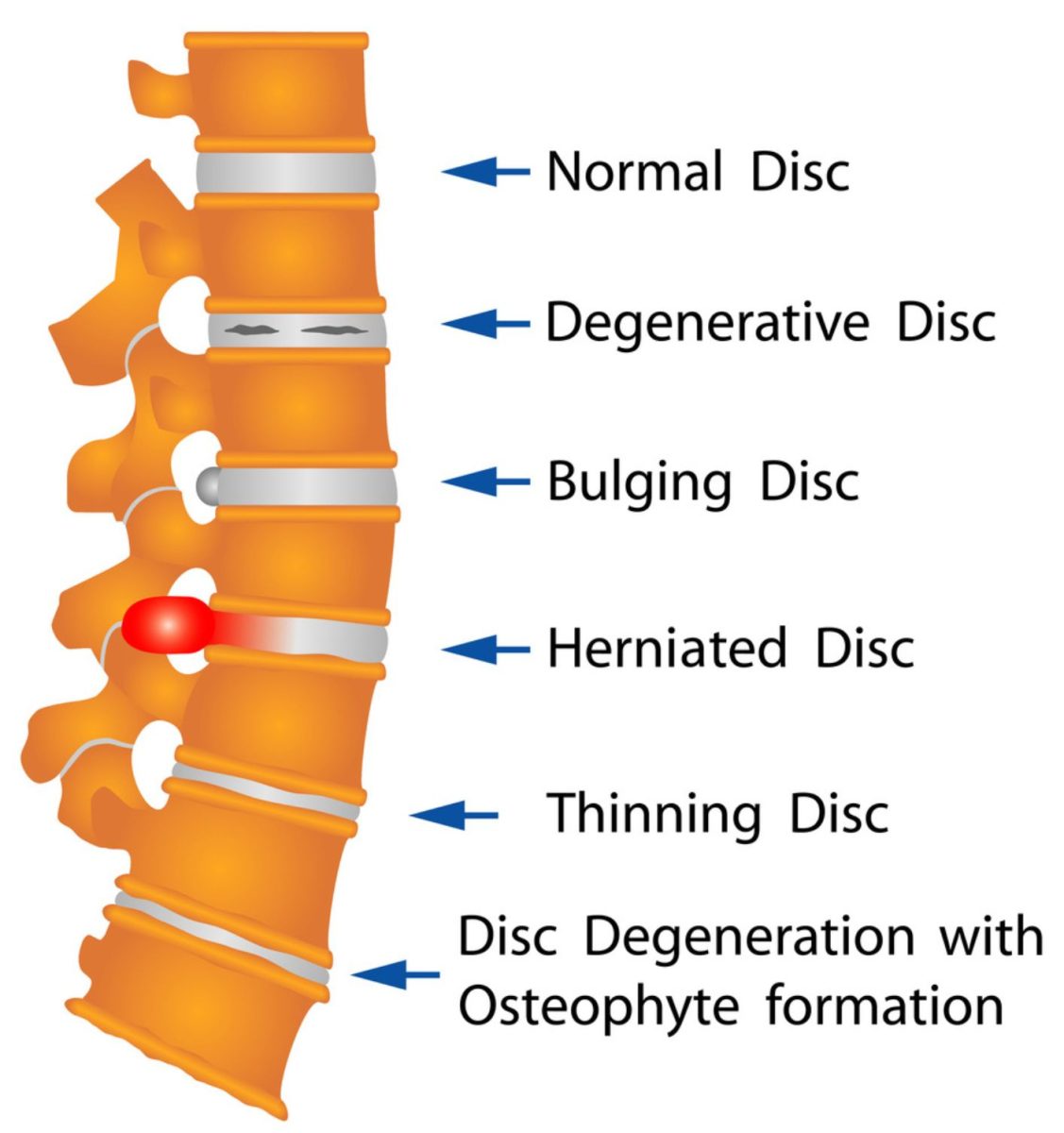Disc Problems

In between each of the five lumbar vertebrae (bones) is a disc, a tough fibrous shock-absorbing pad. Endplates line the ends of each vertebra and help hold individual discs in place. Excess spinal pressure can cause these discs to be compressed until they rupture. Disc herniation occurs when the annulus breaks open or cracks, allowing the nucleus to escape. This is called a Herniated Disc.
Factors that increase risk of disc herniation include:
- Lifestyle choices such as tobacco use, lack of regular exercise, and inadequate nutrition substantially contribute to poor disc health.
- As the body ages, natural biochemical changes cause discs to gradually dry out affecting disc strength and resiliency.
- Poor posture combined with the habitual use of incorrect body mechanics stresses the lumbar spine and affects its normal ability to carry the bulk of the body’s weight.
Disc Degeneration: chemical changes associated with aging causes discs to weaken
Prolapse: the form or position of the disc changes with some slight impingement into the spinal canal. Also called a bulge or protrusion
Extrusion: the gel-like nucleus pulposus breaks through the annulus fibrosus but remains within the disc.
Sequestration or Sequestered Disc: the nucleus pulposus breaks through the annulus fibrosus and lies outside the disc in the spinal canal (HNP).
Combine these factors with the effects from daily wear and tear, injury, incorrect lifting, or twisting and it is easy to understand why a disc may herniate. A herniation may develop suddenly or gradually over weeks or months. Lifting something incorrectly can cause disc pressure to rise to several hundred pounds per square inch!
